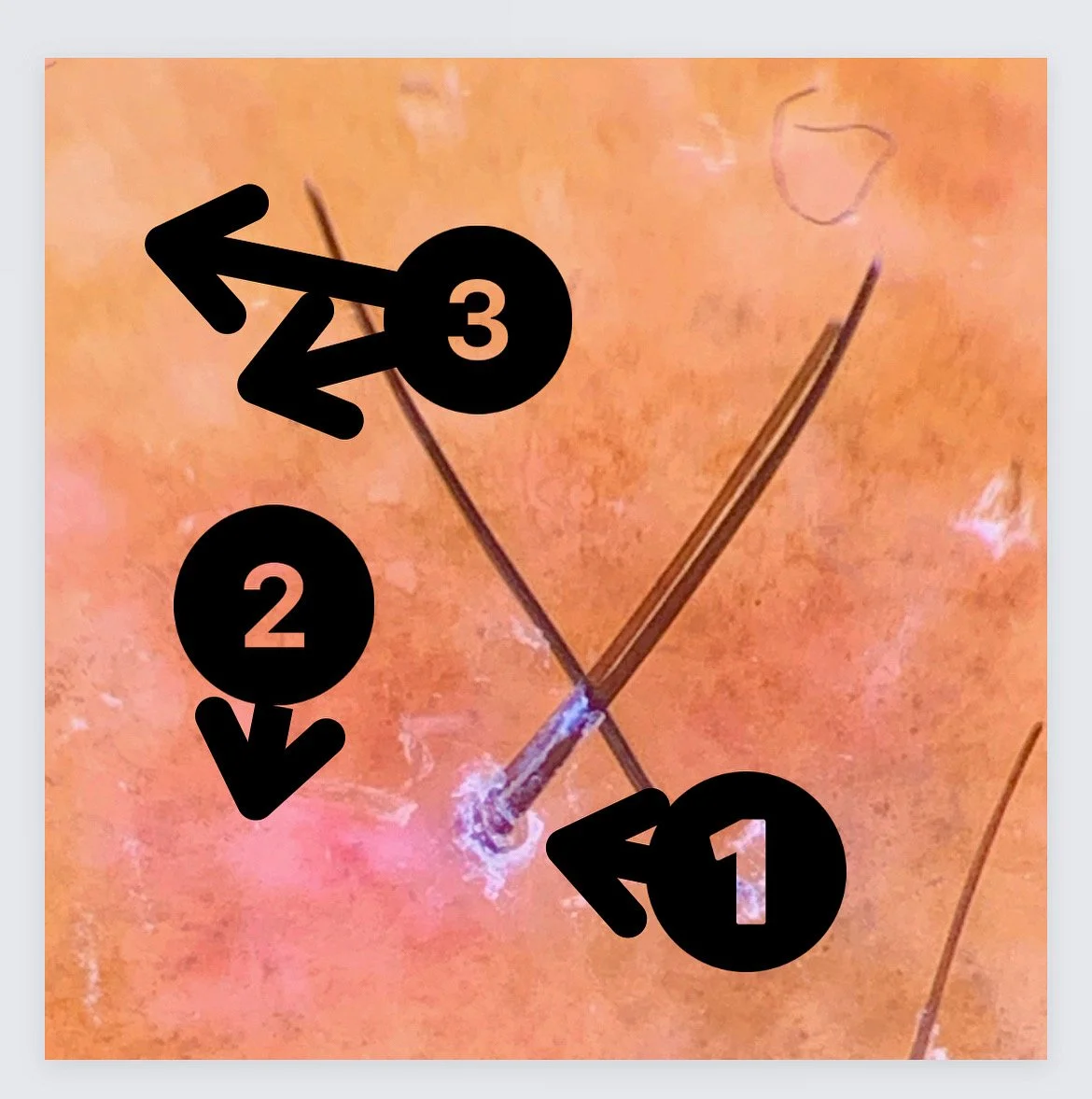Trichoscopy of Lichen Planopilaris Reveals Steps of the Immune Attack
Trichoscopy of Lichen Planopilaris
Trichoscopic image showing different stages of lichen planopilaris, a scarring alopecia. Sites 1, 2 and 3 are explained below the image.
Site number 1: Inflammation in the Follicle with Retained Potential of Follicle to Manufacture a Fiber. This hair at number 1 has a high chance to survive if inflammation can be reduced. Stem cells are abundant underneath this area. The scale around the hair tells us there is inflammation beneath the scalp and the disease is still active. This hair could be shed from the scalp at some point but it will likely grow back. The likelihood it will grow back is dramatically increased if inflammation can be reduced through treatment. But even with some ongoing inflammation, the hair stands a reasonable chance to still grow back. Repeat growth and shedding cycles diminish the chances it will survive - unless a successful treatment plan started. This area is often itchy or tender- but not always.
Site Number 2: Inflammation in the Follicle with Limited to No Potential to Manufacture a Fiber.
Site Number 2 shows a red area with no hair. There may or may not be stem cells underneath. This area has hair proteins underneath and these are being recognized by the immune system. A biopsy of this area will show inflammation and often so called naked hair shafts and sometimes hair containing granulomas. The chance a hair will grow back from this area is very low. With aggressive treatment, some inflamed follicles of this kind might manufacture a hair. Most, however, will not. This area may or may not be itchy or tender to the patient.
Site Number 3 shows a whitish area that is devoid of hair and devoid of any kind of inflammation. There is no chance of regrowth here. Stem cells are believed to be absent in this situation and there are no remaining hair structures or skin structures for the immune system to attack.
The goal of treatment of scarring alopeciais is to the stop inflammation and save hairs. Successful treatment helps stop hairs from stage 1 proceeding to stage 2. It helps hairs in stage 1 that are rapidly growing and shedding to just stay growing. Sometimes, treatment will help some follicles in stage 2 produce a hair fiber again - but only if the hair has recently entered stage 2. Contrary to the widely held belief, the aggressive and early treatment of scarring alopecia can improve hair density for some patients by helping hairs in stage 1 stay growing and helping a proportion hairs in stage 2 pop back up.
Treatments for scarring alopecia are discussed in other posts, or on our DonovanMedical youtube channel.
This article was written by Dr. Jeff Donovan, a Canadian and US board certified dermatologist specializing exclusively in hair loss.

